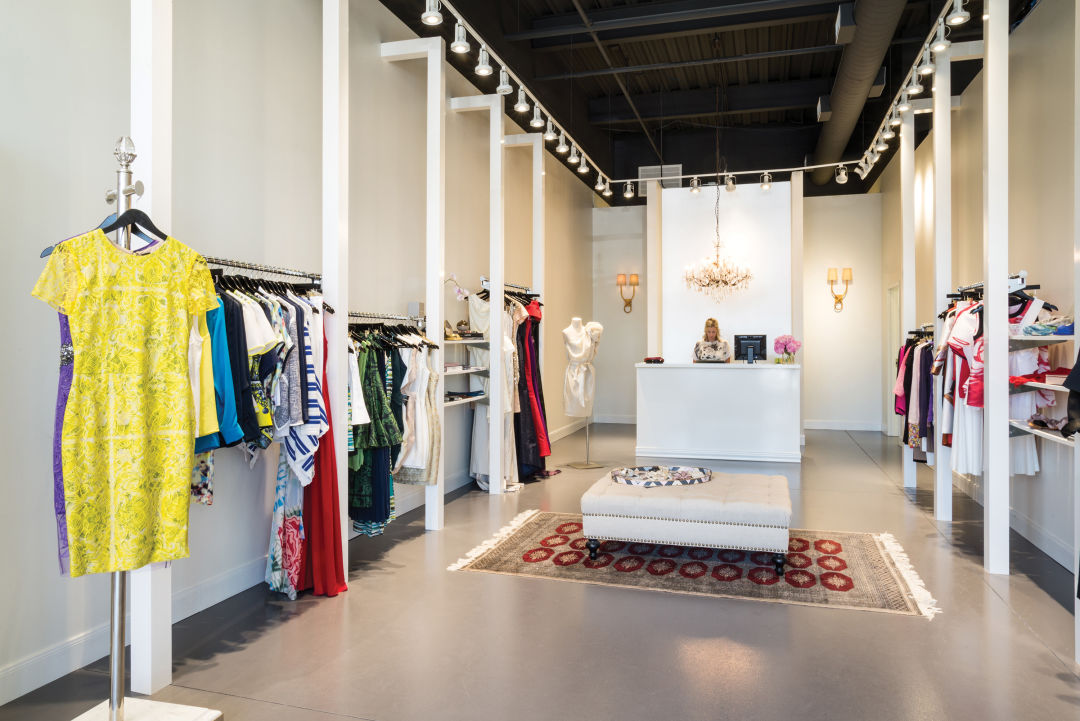Discovering the Evolution and Effect of Apparel on Modern Fashion Trends
The development of apparel has substantially affected modern fashion patterns, combining historical precedents with innovative technologies. Iconic figures like Coco Chanel and Yves Saint Laurent reinvented the apparel industry by introducing ideas that focus on convenience and access, which remain to resonate today. On the other hand, technical strides in locations such as 3D printing and clever textiles are redefining layout possibilities and consumer experiences. Furthermore, the growing focus on inclusivity and sustainability is improving market standards. As we think about these complex influences, one must wonder about just how these components jointly redefine style's function in showing and forming contemporary society.
Historical Fashion Influencers
In the tapestry of style history, certain numbers have left an enduring mark, shaping the fads and styles that specify entire ages. Coco Chanel, a cutting edge developer, redefined females's style by introducing comfortable, sophisticated clothing that left from limiting corsets. Her iconic Chanel suit and little black gown have become classic staples in wardrobes worldwide. Similarly, Christian Dior's post-war "New Look" in 1947, with its party of womanhood through full skirts and cinched waistlines, noted a go back to opulence and has actually continued to affect developers.
Elsa Schiaparelli is one more pivotal figure, renowned for her progressive designs that included surrealist art, collaborating with Salvador Dalí to develop whimsical pieces that tested conventional appearances. Her innovative usage of shade and bold patterns resounds in modern fashion. Yves Saint Laurent, on the other hand, equalized high fashion with prêt-à-porter collections, bringing runway styles to the masses and establishing a criterion for modern ready-to-wear lines.
These dreamers, amongst others, not only reinvented style in their times but likewise established enduring trends that resonate in today's fashion business, providing a foundation whereupon modern-day developers continue to build and innovate. Their heritages emphasize the significance of imagination and bold in style's ever-evolving story.
Technical Advancements in vogue
Amidst the dynamic landscape of the garment industry, technical improvements stand at the center of technology, improving how developers develop and customers involve with style. The assimilation of 3D printing has actually revolutionized layout procedures, making it possible for developers to trying out intricate frameworks and lasting products that were formerly impossible. This modern technology promotes quick prototyping, minimizing waste and accelerating manufacturing times.

Smart fabrics, embedding modern technology into materials, are also transforming the sector. Developments like temperature-regulating and self-cleaning materials supply enhanced performance and convenience. Wearable innovation, including features like physical fitness monitoring and communication, adds a brand-new measurement to fashion, merging appearances with practicality.
Cultural Changes and Design
As technical advancements remain to reshape the apparel industry, cultural shifts are similarly significant, redefining design and customer choices. Over the last few years, the surge of social media platforms has accelerated the dissemination of global fashion trends, allowing diverse cultural impacts to merge and coexist. This electronic interconnectivity has helped with the quick exchange of ideas, causing an extra eclectic and comprehensive analysis of style that shows the diverse nature of modern society.
Cultural recognition and admiration have actually triggered designers to draw inspiration from a broader range of historical and ethnic contexts, integrating traditional concepts with modern looks. This combination has resulted in style that reverberates with a larger audience, advertising a sense of identity and belonging throughout various demographics. Additionally, the increasing need for personalization has driven brand names to use customizable alternatives, allowing consumers to share uniqueness while reflecting their social heritage.
Additionally, shifting social values have actually affected style, with inclusivity and variety becoming main themes. The sector has started to accept versions and influencers of different type of body, ethnic cultures, and gender identifications, challenging standard charm criteria. This change underscores the power of cultural changes in shaping the future of style, as style ends up being a more authentic expression of individual and collective identity.
Sustainability and Modern Layout
While the style sector proceeds to advance, the important for sustainability has ended up being progressively urgent, affecting contemporary style methods. The increase of sluggish style, which highlights high quality over quantity, motivates consumers to invest in timeless pieces instead than short-term fads.
Furthermore, modern-day style is characterized by its innovation in decreasing waste and promoting circularity. This approach not just reduces environmental influence but additionally improves the social responsibility of style homes.

Future Trends in vogue

Sustainability will certainly continue to be a driving force in forming future fashion fads. The market is increasingly taking on environment-friendly materials and moral production methods, replying to a growing customer demand for liable methods. Innovations such as bio-fabricated products and closed-loop why not try these out recycling systems are set to redefine just how clothes is generated and taken in, lowering environmental influence while preserving design and high quality.
Social shifts, consisting of the rise of inclusivity and variety, will likewise play a pivotal function. As culture becomes extra familiar with social concerns, fashion is expected to come to be a platform for expression and modification. Developers will likely concentrate on producing collections that mirror a wider variety of identities and experiences, promoting depiction and ease of access.
Final Thought
The evolution of clothes dramatically impacts contemporary style fads, where historical influences merge with modern layouts. Key figures like Coco Chanel and Yves Saint Laurent have redefined style, while technical technologies such as 3D printing and smart textiles broaden innovative opportunities. Social changes towards inclusivity and sustainability oblige brands to embrace moral practices and embrace diversity. This ongoing development highlights style's function as a mirror to social worths and technical innovation, recommending a future abundant with official site innovation and inclusivity.
The evolution of clothing has actually dramatically affected contemporary fashion trends, combining historic criteria with advanced developments.Amidst the vibrant landscape of the style market, technological advancements stand at the center of advancement, reshaping how developers produce and consumers engage with style.While the fashion industry proceeds to develop, the crucial for sustainability has become significantly urgent, affecting contemporary design techniques. As sustainability ends up being embedded in modern-day style, it paves the method for a more liable and mindful fashion sector.
The development of clothing dramatically affects modern-day fashion fads, where historical impacts merge with modern designs.